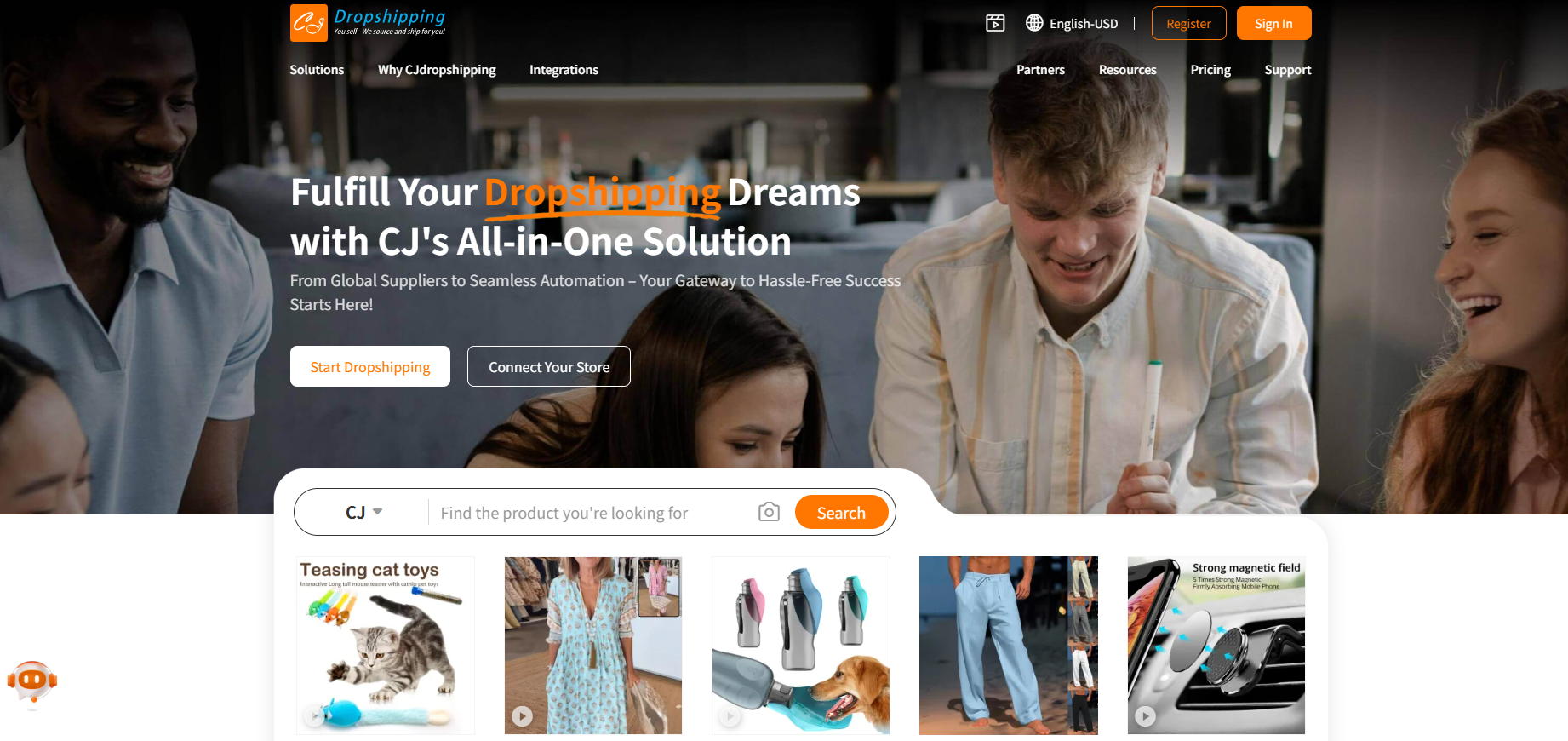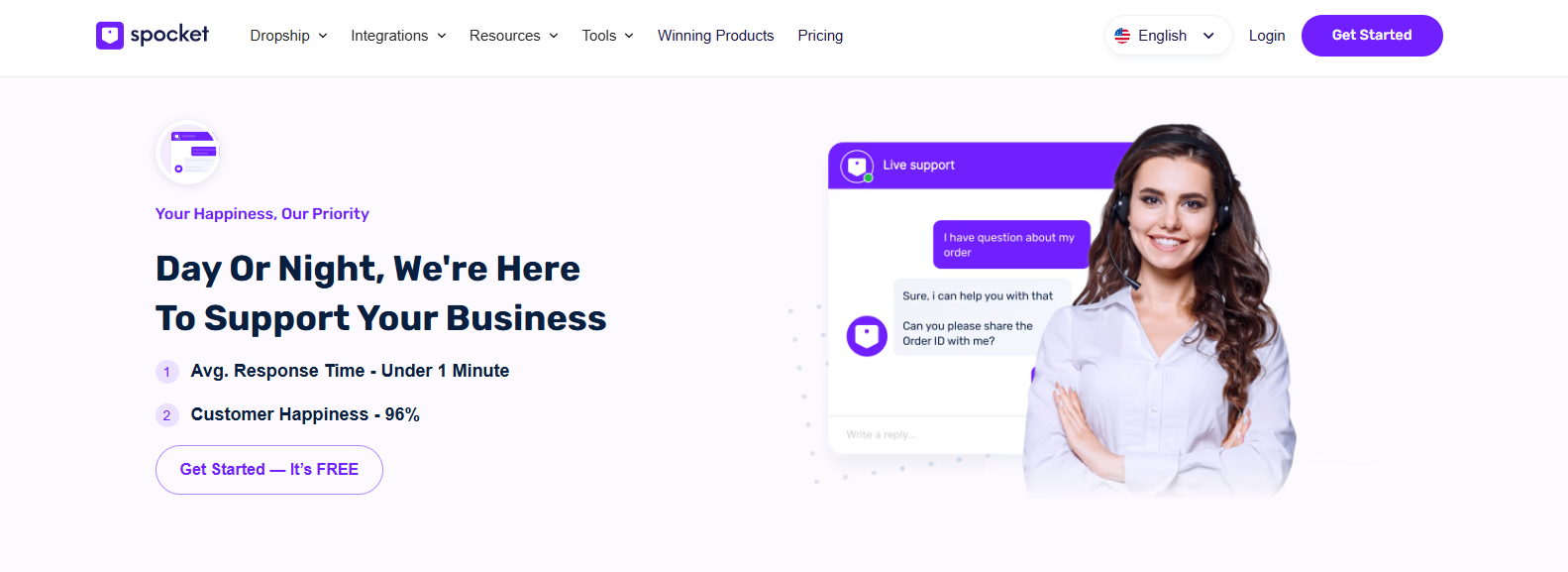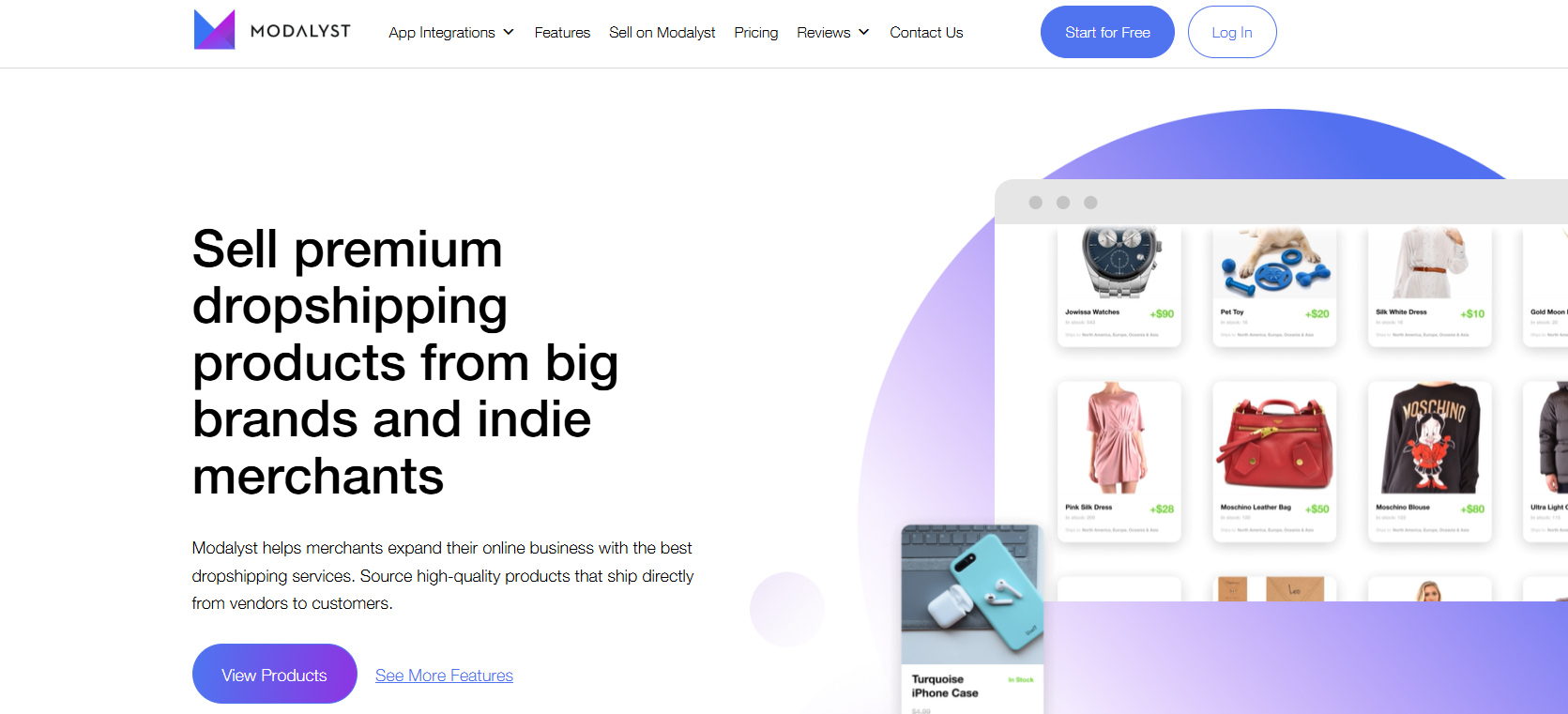For many entrepreneurs, AliExpress is the first gateway into dropshipping. With millions of products and countless categories available at wholesale-level prices, it gives new sellers the chance to test ideas without holding inventory. Even in 2025—when fulfillment speed and branding matter more than ever—AliExpress remains one of the most popular platforms for discovering suppliers and validating product demand.
What makes AliExpress stand out is its low barrier to entry and massive product diversity. A single search can uncover thousands of items, from everyday essentials to trending gadgets or beauty products going viral on TikTok. For dropshippers, it means you don’t have to guess what people want—you can quickly test different niches, monitor sales performance, and pivot as trends change.
At the same time, the platform comes with challenges: inconsistent supplier quality, longer shipping times, and limited options for customization. That’s why knowing how to find reliable dropshipping suppliers on AliExpress is so important. The right supplier isn’t just a product source—it’s the backbone of your store’s reputation, customer satisfaction, and growth potential.
The Role of AliExpress in Dropshipping Success
AliExpress has been a cornerstone of the dropshipping model for over a decade. Its role isn’t just about providing access to cheap products—it’s about giving entrepreneurs a testing ground for ideas without the risks of bulk purchasing. For many sellers, their first breakthrough product started with an AliExpress supplier.
Here’s why AliExpress continues to play an important role in dropshipping success in 2025:
1. Massive Product Variety
AliExpress lists millions of products across every imaginable niche. From trending beauty serums to home décor, fitness gear, or pet accessories, sellers can test markets quickly without relying on a single supplier. This variety makes it ideal for discovering new product opportunities.
2. Low Risk, Low Barrier to Entry
Unlike wholesale sourcing, where minimum order quantities can lock up cash flow, AliExpress allows sellers to order one product at a time. That flexibility makes it possible to test multiple niches before committing to a scaling strategy.
3. Global Reach with Built-in Logistics
AliExpress suppliers often use shipping networks like AliExpress Standard Shipping or ePacket, which cover over 200 countries. While shipping times can be longer than local fulfillment, the ability to reach customers worldwide at relatively low cost helps sellers expand beyond their home markets.
4. Real-Time Demand Validation
By monitoring product order counts and customer reviews, sellers get instant feedback on what’s working. A product with thousands of positive reviews and consistent orders is a strong signal of demand—saving time and money compared to guessing trends.
5. Accessibility for Beginners
Because it doesn’t require advanced contracts or business licenses to start, AliExpress remains one of the easiest platforms for new dropshippers. It’s often the stepping stone before moving into private-label or branded dropshipping.
Challenges of Using AliExpress Suppliers
While AliExpress offers accessibility and variety, it also comes with challenges that every dropshipper must be aware of. Understanding these pain points helps set realistic expectations and guides you toward building a more sustainable supply chain.
1. Longer Shipping Times
One of the most common complaints about AliExpress is delivery speed. Standard shipping methods like AliExpress Standard Shipping or ePacket often take 10–20 days to reach the US or Europe, and even longer during peak seasons. In a world where customers are accustomed to Amazon Prime–style delivery, this can be a deal-breaker for many.
2. Inconsistent Product Quality
Because AliExpress hosts thousands of individual sellers, product quality can vary dramatically. Two suppliers offering the same product may have very different standards. Without careful vetting and test orders, you risk shipping items that don’t meet customer expectations—leading to returns and negative reviews.
3. Limited Branding and Packaging Options
Most AliExpress suppliers ship products in generic packaging. For dropshippers who want to build a recognizable brand, this is a major limitation. Private labeling and custom packaging are rare, making it harder to differentiate your store in a competitive market.
4. Communication Barriers
Many suppliers are based in China, and while communication has improved over the years, differences in time zones and language can still cause delays or misunderstandings. Clear communication is essential when you rely on a supplier to handle every order.
5. Supplier Reliability
Some sellers on AliExpress may disappear suddenly, change product listings, or increase prices without warning. This inconsistency can disrupt your store if you rely too heavily on a single supplier.
6. Dispute and Return Complexities
While AliExpress offers buyer protection, handling disputes and returns can be slow and cumbersome. Customers who expect fast refunds or easy exchanges may grow frustrated, which puts pressure on your store’s reputation.
Step-by-Step: How to Find Dropshipping Suppliers on AliExpress
Finding trustworthy suppliers on AliExpress isn’t about luck—it’s about following a structured process that minimizes risk while maximizing product potential. Here’s a practical workflow you can apply in 2025:
1. Start with Focused Searches
Use precise keywords when looking for products, and add modifiers like “fast shipping” or “US warehouse” to narrow results. This helps you filter out suppliers who can’t meet modern customer expectations.
2. Apply Filters and Sort by Proof of Demand
Always filter for 4 stars & up and check “Top Brand” when available. Sorting results by Orders highlights products with proven demand, while “Newest” can reveal fresh opportunities before they become saturated.
3. Study Ratings and Reviews Beyond the Stars
Look for suppliers with 95%+ positive feedback and thousands of completed orders. More importantly, read reviews carefully. Consistent praise about shipping speed or packaging is a green flag, while repeated complaints about defects or delays are a warning sign.
4. Analyze Product Listings for Professionalism
Reliable suppliers invest in their listings. Clean product images, original descriptions, and accurate specs suggest commitment. Sloppy, copy-paste listings often signal a lack of care, which may translate to poor fulfillment.
5. Use the AliExpress Dropshipping Center
This built-in tool gives you insights into sales trends, logistics performance, and shipping times. Reviewing this data helps you avoid products that look appealing but don’t actually sell consistently.
6. Contact Suppliers Before You Commit
Send a quick message with practical questions about processing time, shipping methods, and returns. How quickly and clearly they respond is often a good predictor of how supportive they’ll be once you’re scaling.
7. Place Test Orders to Verify Quality
Never skip this step. Order at least one product for yourself and check everything—quality, packaging, tracking updates, and delivery time. A test order shows you the real customer experience before you invest in ads.
8. Compare Multiple Suppliers for the Same Product
Don’t rely on a single vendor. Keep at least two suppliers in your pipeline for bestsellers. This way, if one runs out of stock or raises prices, your business won’t grind to a halt.
9. Scale Gradually After Validation
Once a supplier passes your test order, start with small campaigns and monitor performance closely. If defect rates stay low and delivery times are consistent, you can safely scale.
Qualities of a Reliable AliExpress Supplier
Not all suppliers on AliExpress are created equal. Some are trustworthy long-term partners, while others may cause delays, poor product quality, or unhappy customers. To protect your business and reputation, here are the key qualities that define a reliable AliExpress supplier in 2025:
1. Strong Track Record
Look for suppliers with a history of high-volume orders and 95%+ positive feedback ratings. A proven track record signals consistency and reliability.
2. Transparent Shipping Policies
Reliable suppliers clearly state their shipping methods, average delivery times, and tracking availability. They don’t overpromise unrealistic delivery speeds.
3. Accurate Product Listings
Good suppliers provide professional product photos, detailed descriptions, and specifications that match the real product. Consistency between listing and reality reduces disputes.
4. Responsiveness and Communication
Suppliers who reply promptly and clearly to inquiries are more likely to support you when issues arise. Delayed or vague responses are warning signs.
5. Willingness to Resolve Issues
Mistakes happen, but reliable suppliers take responsibility. They offer refunds or replacements for defective products instead of ignoring problems.
6. Quality Packaging
Even if branding options are limited, dependable suppliers still use secure packaging that protects products during transit. Damaged goods reflect poorly on your store.
7. Competitive but Realistic Pricing
While cheap products are tempting, extremely low prices often signal poor quality. Trustworthy suppliers balance fair pricing with consistent product standards.
8. Stability and Availability
A reliable supplier keeps products in stock and avoids sudden listing removals or price spikes. Consistency is key when you’re running paid ads or scaling orders.
Alternatives and Complementary Platforms
AliExpress is a powerful place to start, but it isn’t always the best long-term solution for dropshipping. As your store grows, you’ll likely need faster fulfillment, more consistent product quality, and branding options—areas where AliExpress can be limited. That’s why many successful dropshippers use AliExpress primarily for testing products and then shift to complementary platforms when it’s time to scale.
Here are some alternatives and complements to consider in 2025:

CJdropshipping has evolved into one of the most versatile fulfillment partners for global dropshippers, especially those selling into the US and Europe. Unlike AliExpress vendors, who mainly ship one-off orders, CJ offers a complete ecosystem that covers product sourcing, warehousing, fulfillment, and brand customization.
-
Key Strengths:
-
Faster Delivery: US and European warehouses allow stocked products to reach customers in 3–7 days, a huge improvement over traditional AliExpress timelines.
-
On-Demand Sourcing: Sellers can request trending items not listed in the catalog—ideal for keeping up with fast-moving niches like beauty, home décor, or seasonal items.
-
Branding & OEM Services: Beyond generic dropshipping, CJ provides custom packaging, private labeling, and OEM production support, enabling sellers to develop their own skincare or lifestyle brand rather than just reselling.
-
Platform Integrations: Direct integrations with Shopify, WooCommerce, eBay, TikTok Shop, Etsy, and more ensure orders sync automatically, saving time and reducing errors.
-
Flexible Partnerships: CJ works in cooperation with sources like AliExpress and logistics providers such as YunExpress, giving sellers multiple sourcing and shipping options without juggling multiple accounts.
-
-
Best For: Sellers who want to go beyond product testing and focus on scaling with speed, reliability, and brand identity. CJ is particularly valuable for entrepreneurs who see dropshipping as the foundation of a long-term e-commerce brand.
-
Limitations: Some oversized or fragile products may require longer handling times or special shipping arrangements, so planning your catalog and inventory strategy is important.
2. Spocket

Spocket is a platform designed to connect dropshippers with US and European suppliers. Its biggest advantage over AliExpress is speed: many products ship within 2–5 days, which dramatically improves customer satisfaction compared to 10–20 day delivery times.
-
Key Strengths:
-
Access to thousands of US and EU suppliers.
-
Fast domestic shipping that rivals Amazon-level delivery speeds.
-
Integration with Shopify, WooCommerce, BigCommerce, and Wix for easy automation.
-
Curated catalogs with natural, boutique, and clean-label products—popular in beauty and lifestyle niches.
-
-
Best For: Sellers who want to build fast-shipping, premium-feeling stores where customers expect quick delivery and higher quality.
-
Limitations: Pricing is higher than on AliExpress, and the catalogs may feel smaller. However, the faster fulfillment makes it worthwhile for stores aiming to compete on customer experience.
3. Modalyst

Modalyst acts as an aggregator, connecting sellers to US and international suppliers through a single platform. Unlike AliExpress, where you need to vet each vendor, Modalyst pre-screens suppliers, offering a safer environment for dropshippers.
-
Key Strengths:
-
Access to a wide range of categories, including skincare, fashion, and eco-friendly goods.
-
Pre-vetted suppliers reduce the risk of inconsistent quality.
-
Integration with Shopify, Wix, and other major platforms for real-time inventory syncing.
-
Offers both affordable items and higher-end brands, giving sellers flexibility.
-
-
Best For: Entrepreneurs who want a plug-and-play model with reduced risk and a diverse catalog, but without spending hours vetting suppliers individually.
-
Limitations: Platform fees can be higher, and margins may be slimmer compared to sourcing directly from AliExpress.
4. Wholesale Platforms (Faire, Abound, Tundra, etc.)
For sellers who move past testing and into scaling with larger volumes, wholesale marketplaces are a natural next step. Platforms like Faire, Abound, and Tundra connect dropshippers to established US brands and wholesalers, many of which don’t list on AliExpress.
-
Key Strengths:
-
Access to authentic, premium, and boutique US brands.
-
Faster domestic fulfillment and better compliance with US regulations.
-
Opportunity to negotiate bulk discounts and long-term contracts.
-
Many suppliers offer private-label or white-label opportunities for branding.
-
-
Best For: Sellers who want to evolve from “testing stores” into serious e-commerce brands and are ready to handle higher order volumes.
-
Limitations: Some suppliers require minimum order quantities (MOQs), which increases upfront investment. Not as beginner-friendly as AliExpress.
Tips for Building Long-Term Supplier Relationships
In dropshipping, your suppliers are not just vendors—they’re your silent business partners. A reliable relationship can mean faster shipping, better prices, and priority support when you need it most. Here’s how to cultivate supplier partnerships that last:
1. Start Small, Then Scale Gradually
Before asking a supplier to handle hundreds of orders, begin with small test batches. Once you demonstrate consistent demand, most suppliers will take your store more seriously and may offer better terms.
2. Communicate Clearly and Regularly
Keep an open line of communication. Let suppliers know about upcoming promotions or seasonal spikes so they can prepare inventory. Proactive updates build trust and help avoid stockouts or delays.
3. Pay Attention to Reliability Metrics
Track processing times, defect rates, and customer complaints. Share this data with suppliers so they understand your expectations. Reliable partners will use it to improve their operations.
4. Negotiate Beyond Price
Cost is important, but don’t focus only on price. Ask about faster shipping lanes, custom packaging, or private-label opportunities. These extras can create more value than shaving off a small margin.
5. Diversify Without Diluting
Work with more than one supplier for your bestsellers to safeguard against disruptions. At the same time, don’t spread yourself too thin—focus on building deeper relationships with two or three trusted partners.
6. Treat Suppliers Like Partners, Not Just Providers
Share your growth plans, and show appreciation when they help you scale smoothly. Many suppliers reserve their best service, discounts, and new product alerts for sellers who treat them as collaborators rather than just order processors.
7. Leverage Hybrid Fulfillment
Consider a dual strategy: test new items on AliExpress for speed and variety, then move proven winners to fulfillment partners like CJdropshipping or Spocket for faster shipping, branding, and long-term stability. This balance shows suppliers you’re serious about scaling and makes them more likely to invest in your success.
Final Thoughts: Choosing Wisely for Sustainable Growth
AliExpress will likely remain a cornerstone of dropshipping for years to come, especially for entrepreneurs looking to test new niches without heavy upfront investment. Its vast catalog and low entry barriers make it the perfect launchpad. But long-term growth in 2025 requires more than just access to products—it demands reliability, speed, and brand identity.
The smartest strategy is often a hybrid one:
-
Test and validate products quickly on AliExpress, where variety is endless.
-
Transition winning items to specialized partners like CJdropshipping, Spocket, or Modalyst, who offer faster shipping, branding support, and more stable supply chains.
-
Invest in relationships, treating suppliers as partners who share in your growth.
In today’s market, customer loyalty hinges on the experience you deliver, not just the price tag. Shoppers expect fast delivery, consistent quality, and packaging that feels professional. By choosing your suppliers wisely—and moving beyond short-term thinking—you set up your dropshipping store not only for immediate wins but also for sustainable growth.
In 2025, dropshippers who balance AliExpress’s accessibility with the professionalism of complementary platforms will be best positioned to turn one-time buyers into repeat customers and small stores into lasting e-commerce brands.
